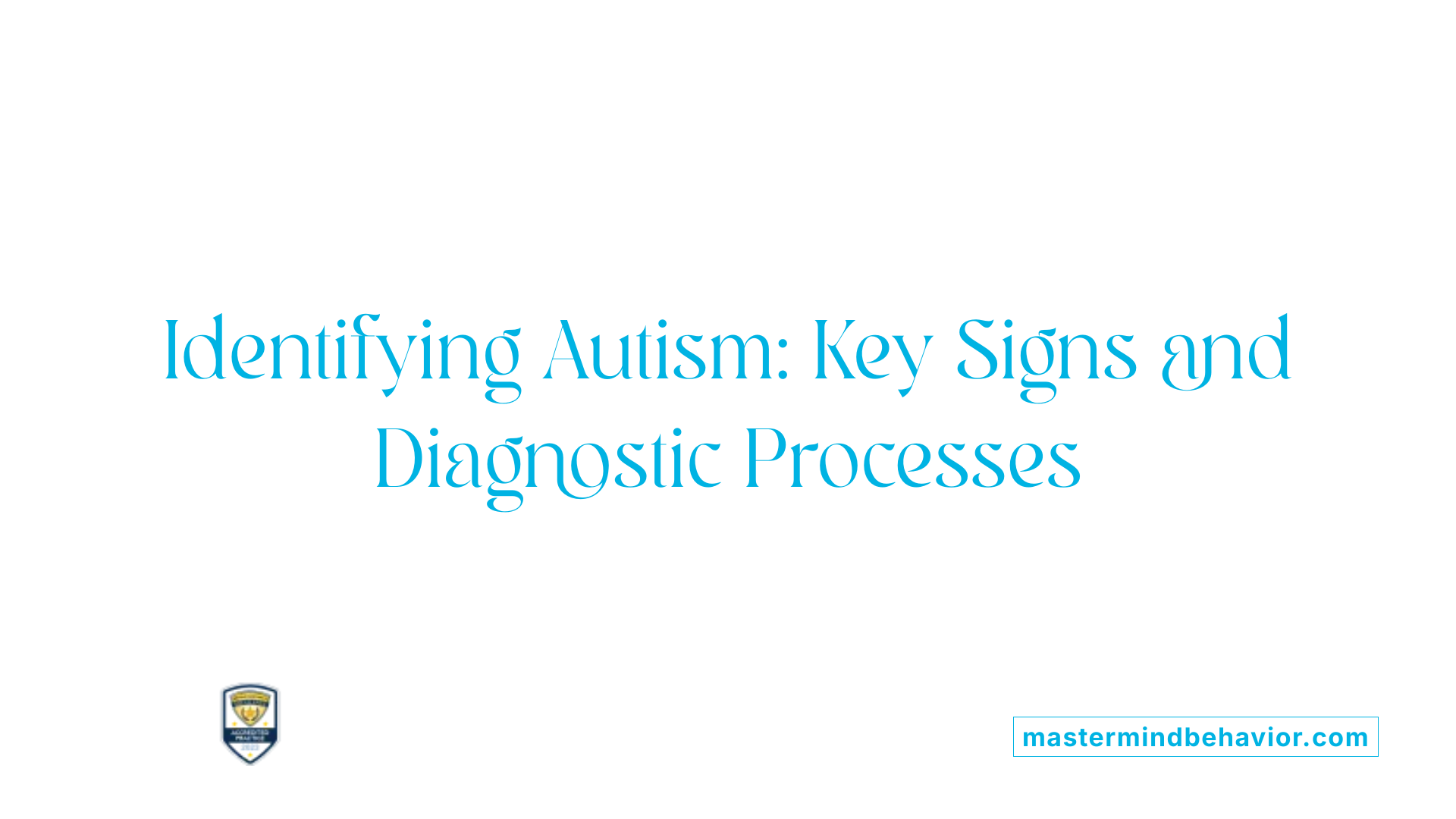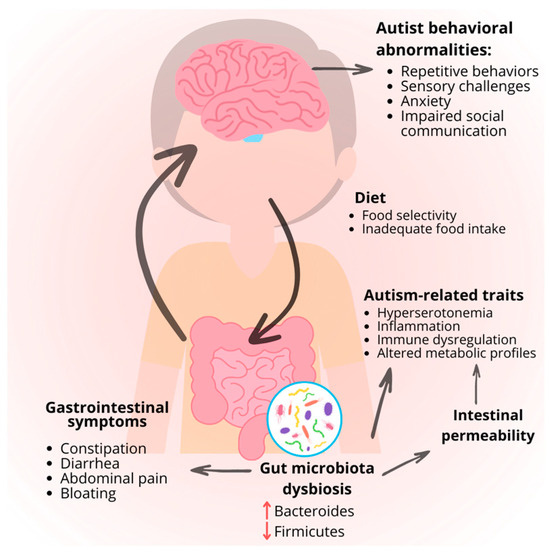How structured days help children with autism—according to an Autism Therapist’s advice
How structured days help children with autism—according to an Autism Therapist’s advice
Blog Article
Checking Out Efficient Approaches for Supporting People With Behavior Autism
Sustaining people with behavioral autism requires a nuanced understanding of their distinct demands. You'll locate that customized interventions, grounded in evidence-based methods, can make a substantial difference. By collaborating with family members and experts, you can produce a tailored method that promotes interaction and development. But what particular techniques can you implement to ensure these individuals prosper? Let's check out the effective approaches that can improve their daily experiences.
Comprehending Behavior Autism: Secret Features and Difficulties
When you begin to recognize behavioral autism, you'll see numerous vital characteristics and challenges that define the experience for individuals. Social interactions might be challenging; people might discover it tough to read social hints, leading to misunderstandings in partnerships.
In addition, sensory sensitivities are typical, triggering discomfort in atmospheres with loud sounds or bright lights. These difficulties can result in anxiousness or aggravation, influencing day-to-day live. It is very important to recognize that each individual is unique, and their experiences might vary. Comprehending these features permits you to approach support with compassion, promoting a favorable connection that can improve their wellness and encourage development.
The Value of Personalized Interventions
When it concerns supporting individuals with behavior autism, individualized treatments are vital. By producing customized intervention plans that focus on individual strengths, you can greatly boost their development. Teaming up with assistance groups guarantees everyone is lined up in supplying the finest treatment feasible.
Customized Treatment Plans
Producing tailored intervention strategies is vital for successfully sustaining people with behavioral autism, as each person's staminas, requirements, and obstacles vary considerably. Begin by gathering in-depth information about the individual, including their preferences, activates, and past experiences. This flexibility not just fosters engagement yet likewise advertises a sense of ownership and empowerment for the person.
Individual Toughness Evaluation
An individual toughness assessment is important for establishing individualized interventions for individuals with behavior autism. By focusing on each person's distinct capacities, you can produce techniques that reverberate with their skills and interests. This method not just enhances engagement but additionally increases self-esteem.
When you identify staminas, like phenomenal memory or imaginative ability, you can customize treatments that utilize these areas. This not only makes discovering more efficient yet likewise cultivates a feeling of success. Keep in mind, every person has one-of-a-kind capacities; recognizing them encourages you to craft purposeful experiences.
Integrating these strengths into daily routines and healing techniques can cause improved end results. Ultimately, prioritizing toughness warranties that treatments are not simply effective however likewise enhancing for the individual.
Collaborative Assistance Groups
Acknowledging specific strengths sets the stage for developing collective assistance teams that concentrate on personalized interventions. By uniting specialists, relative, and the individuals themselves, you create a supportive network that tailors methods to satisfy particular needs. Each staff member contributes distinct understandings, guaranteeing an extensive approach that addresses behavioral obstacles efficiently.
You'll discover that collaboration cultivates open interaction, allowing for continuous feedback and adjustments. This adaptability is important, as it helps everybody involved keep aligned with the person's goals and choices. Additionally, taking part in this team-based approach empowers individuals with autism, promoting their self-advocacy and confidence. Eventually, tailored interventions developed through collective assistance teams bring about even more purposeful development and a much better lifestyle.
Evidence-Based Interaction Methods

When collaborating with people on the autism range, using evidence-based communication strategies can considerably enhance their capacity to attach and reveal themselves. Using visual supports, like photo schedules or interaction boards, helps make clear expectations and cultivates independence. Simplifying language and utilizing concrete terms enables far better understanding, lowering irritation.
Integrating social stories can prepare individuals for different circumstances, educating them ideal responses and habits. Motivating making use of assistive innovation, such as speech-generating devices, equips people to interact better. Additionally, using predictable atmospheres and consistent routines can provide a sense of protection, making communication extra reliable.
Bear in mind to be client and provide time to process your words. Involving in energetic listening, where you mirror their ideas and feelings, can enhance your link. By carrying out these strategies, you'll create a much more helpful interaction ambience for people with autism.
Developing Helpful Settings
Developing encouraging atmospheres for people with behavior autism starts with executing organized regimens that offer predictability and safety and security. You'll additionally intend to make sensory-friendly rooms that satisfy individual requirements, lowering frustrating stimuli. Furthermore, using positive support strategies can urge wanted habits and cultivate a feeling of achievement.
Structured Regular Execution
Developing a structured routine can significantly improve the atmosphere for individuals with behavior autism. By developing a consistent routine, you supply predictability, which can minimize stress and anxiety and confusion. A well-structured environment promotes independence and self-confidence, sustaining their total development.
Sensory-Friendly Spaces Layout

Favorable Reinforcement Strategies
When you include positive reinforcement strategies into your approach, you can significantly improve the learning and behavior end results for people with autism. This includes compensating and identifying desired behaviors, which urges repetition of those behaviors. Start by determining what inspires the specific-- be it praise, symbols, or special tasks. Reinforce positive activities immediately to develop a clear link between actions and incentive. Uniformity is essential; guarantee that everyone entailed in their treatment applies the same reinforcement methods. You can likewise gradually boost the complexity of tasks as individuals come to be more comfy, enhancing their progression. By creating an environment where favorable behaviors are acknowledged, you foster self-confidence and a feeling of achievement, inevitably supporting their advancement and health.
Collective Approaches: Working With Family Members and Professionals

Entailing household participants in decision-making equips them and enhances their capability to support their liked ones. Professionals, consisting of educators and my company specialists, can supply beneficial sources and training that further aid family members.
You ought to additionally appreciate each party's point of view, acknowledging that households know their child ideal while experts bring specialized understanding. By crafting individualized strategies with each other, you create a customized technique that deals with special demands. Aba Therapist. Eventually, this partnership not only benefits the specific with autism yet also reinforces the assistance network surrounding them, making it much more cohesive and effective
Incorporating Social Abilities Training
Building on the strong partnerships developed in between family members and professionals, integrating social abilities training can significantly boost the support given to individuals with behavior autism. This training assists you teach essential communication abilities, such as launching discussions, recognizing non-verbal hints, and reacting suitably in social scenarios.
By making use of structured activities, role-playing, and real-life circumstances, you produce chances for technique in a safe atmosphere. Urge people to join team setups where they can engage with peers, cultivating relationships and boosting their comfort in social contexts.
It is essential to tailor the training to every individual's distinct strengths and challenges, ensuring they really feel positive and qualified. Consistently integrating comments from both specialists and households can fine-tune these strategies, making social skills training more effective. Ultimately, you're empowering individuals with the devices they require to navigate social communications successfully and develop significant partnerships.
Keeping Track Of Progression and Adjusting Techniques
As you apply social abilities training, it's essential to monitor progression and change strategies appropriately. Maintain track of habits, keeping in mind renovations and troubles.
Involve the person in reflection, asking how they really feel concerning their progress and what difficulties they encounter. This comments is very useful for customizing your method. Don't be reluctant to customize them. if particular techniques aren't producing outcomes.
Incorporate a range of techniques to maintain the training appealing and dynamic. Work together with other caretakers or specialists for fresh perspectives and insights. Keep in mind, adaptability is vital; what jobs today may not function tomorrow. By remaining alert and responsive, you produce a setting that fosters development and advancement. Always commemorate achievements, regardless of how tiny, to urge continued effort and excitement.
Regularly Asked Concerns
What Are the Usual Misconceptions Concerning Behavioral Autism?
You could believe behavioral autism only influences communication, yet it includes a lot more. Lots of think all individuals with autism act the very same, overlooking their one-of-a-kind characteristics and capabilities. It's important to recognize each individual's distinctions.
How Can Modern Technology Help in Supporting People With Behavior Autism?
Technology can improve communication, giving devices like apps for social skills and habits monitoring. You can make use of online fact for immersive experiences, and wearable devices can monitor moods, assisting you sustain people effectively.
What Duty Do Sensory Processing Issues Play in Behavioral Autism?
Sensory processing concerns can significantly affect habits. You could see that frustrating sensory input results in anxiety or meltdowns. Recognizing these obstacles assists you produce a more encouraging setting for people experiencing sensory overload.
Exist Specific Nutritional Suggestions for People With Behavioral Autism?
Yes, specific nutritional referrals can help. You may take into consideration a gluten-free or casein-free diet, which some find useful (Autism Therapist). Always seek advice from a medical care expert prior to making considerable adjustments to assure it's ideal for you or your loved ones
Just How Can Peers Be Educated to Support People With Behavior Autism?
To educate peers, you can organize workshops, produce informative materials, and urge open discussions. Engaging activities, redirected here like role-playing scenarios, assist them recognize obstacles dealt with by people, cultivating compassion and efficient assistance within the community.
Exploring Effective Techniques for view Sustaining People With Behavior Autism.
Creating customized treatment plans is crucial for successfully supporting people with behavior autism, as each person's needs, staminas, and challenges differ substantially.An individual staminas evaluation is necessary for establishing customized interventions for individuals with behavior autism.To sustain individuals with behavioral autism, developing sensory-friendly areas is vital, as it can greatly boost their convenience and focus.Joint techniques are crucial for sustaining individuals with behavior autism, as they cultivate a strong collaboration in between specialists and families.
Report this page